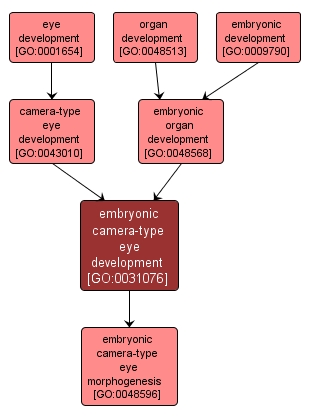GO TERM SUMMARY
|
| Name: |
embryonic camera-type eye development |
| Acc: |
GO:0031076 |
| Aspect: |
Biological Process |
| Desc: |
The process occurring during the embryonic phase whose specific outcome is the progression of the eye over time, from its formation to the mature structure. |
Synonyms:
- embryonic eye development
|
|

|
INTERACTIVE GO GRAPH
|














